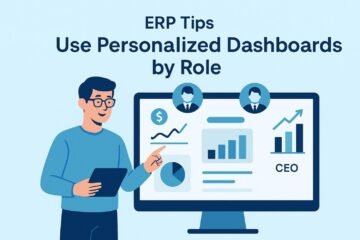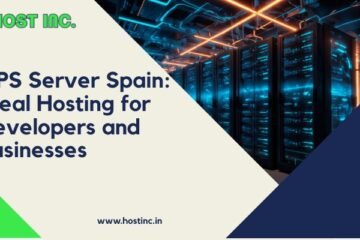Scalable web application development is how startups grow without burning cash. If you ship too slowly, you miss the moment. If you scale too soon, costs spiral.
Here is the sweet spot. Teams that keep scope tight and automate releases ship features 30% to 50% faster in the first quarter. Startups that track cloud usage from day one cut 20% to 30% of waste without losing speed. Those wins compound week after week.
This guide gives you a simple, proven path to build fast, scale smoothly, and spend wisely.
How Startups Can Go on a Budget-Build for Scalable Web Application Development
1) Start With a Lean Architecture That Still Scales
Most budget pain starts with architecture choices made too early. You do not need microservices on day one. You do need clear seams, repeatable patterns, and a plan for growth.
Pick the right starting shape
Begin with a modular monolith. It keeps code in one deployable unit, but organizes features into modules with strict boundaries. You get simple operations now and an easy path to split later if traffic explodes.
Quick comparison
| Approach | When it fits | Pros | Cons |
| Monolith | Very small MVP, one team | Easiest to ship | Hard to grow, tangled code |
| Modular monolith | Most MVPs to Series A | Simple deploys, clear seams | Needs discipline on module rules |
| Microservices | Proven product, multiple teams | Independent scaling, strong isolation | Ops cost, network complexity |
Keep early choices boring and proven
- One runtime you know well.
- One framework with a healthy community.
- One relational database to start.
- One cache layer you can add later.
This keeps affordable web app development realistic: fewer moving parts to learn, test, and maintain.
Draw clean boundaries from day one
Even inside a single codebase, mark modules by domain: accounts, billing, content, analytics. Use interfaces between modules and avoid reaching across boundaries. Keep a single source of truth for each entity. Add a lightweight message queue only when you really need async work.
Plan your split points
Write down two “break glass” signals that will trigger a future split:
- Response time on a hot path exceeds your SLO twice in a month.
- A module needs a different data store or unique scale pattern.
When those happen, you peel that module into its own service. Until then, enjoy the low cost of simple deployments.
With a lean shape in place, you can now control scope and spend where it matters most.
2) Ruthless Scope: Build Only What Moves the Metric
You scale cheaply by saying no to most features. Tie every item to a clear metric – activation, conversion, or retention. If it does not move the number, it waits.
Slice the MVP into “thin verticals”
A thin vertical is a complete user path from UI to database for one job:
- Sign up and verify email
- Create first project
- Invite one teammate
- Share a link
Each path can ship alone and deliver value. Shipping thin verticals reduces rework and helps cost-efficient app building.
Example backlog (first six weeks)
- Week 1–2: Email sign-up, passwordless login, profile
- Week 3: Create project, autosave, simple list view
- Week 4: Share link, basic access roles
- Week 5: CSV export, activity log
- Week 6: Usage meter, plan upgrade
Buy the undifferentiated heavy lifting
You do not need to build everything. Buy identity, payments, email delivery, and error tracking. Build only what is unique for your users.
- Build: core domain logic, onboarding flows, reporting tuned to your value
- Buy: auth, payments, file storage, observability, search if possible
Estimate by constraints, not wish-lists
Give each slice a budget in time, compute, and complexity:
- Time: max 2 weeks per slice
- Compute: estimate peak RPS, pick a small plan, enable autoscaling
- Complexity: must pass basic tests and support rollbacks
This keeps momentum and makes web development cost predictable. If you want help standing this up, choose a Web app development services partner once.
With tight scope, the next lever is smart infrastructure that scales when you need it and idles when you do not.
3) Use Managed Platforms and Autoscaling to Cut Ops Cost
Infrastructure can be your biggest silent spender. Choose services that handle the heavy lifting and charge only when you use them.
Practical stack that stays frugal
- Frontend delivery: CDN with edge caching and compression
- Backend runtime: PaaS or containers with horizontal autoscaling
- Background work: serverless functions or a light queue worker
- Database: managed Postgres with point-in-time recovery
- Cache and CDN: managed Redis and edge cache for hot reads
- File storage: object storage with lifecycle rules
When to use which
| Need | Best early choice | Why it saves money |
| Burst traffic, unpredictable load | Serverless endpoints or autoscaled containers | Pay-per-use or scale-to-zero |
| Steady API traffic | Small PaaS dynos/instances | Simple ops, right-size units |
| Heavy reads on same data | Add Redis cache | Avoids DB overprovisioning |
| Large files | Object storage + CDN | Cheap at rest, fast at edge |
Turn on the right defaults
- Autoscaling with modest max limits
- Health checks and zero-downtime deploys
- Slow query logging and basic DB connection pooling
- CDN caching for static and API GET responses where safe
- Backups and deletion protection
Watch the bill in real time
Add budget alerts by service and tag resources by environment. Shut down non-prod at night and on weekends. Run a weekly “cost walk” with the team: what grew, why, and what to adjust. These simple habits deliver affordable web app development without surprises.
Your platform is lean. Next, make the app efficient where it counts—the data and the hot paths.
4) Design the Data Layer for Speed and Growth
Fast, predictable queries keep users happy and costs down. You do not need exotic databases. You do need a few solid patterns.
Model for access, not just storage
Start with normalized tables, then denormalize only for known hot reads. Keep write paths simple and consistent. Add read models if a view gets heavy.
- Use surrogate keys, timestamps, and soft deletes where needed
- Keep indexes small and targeted
- Avoid N+1 queries with careful loading strategies
Cache with intent
Three layers do most of the work:
- Client and edge: cache static assets and public GETs
- Application cache (Redis): store computed or aggregated results for seconds to minutes
- Database cache (materialized views): refresh on a schedule for heavy dashboards
Batch and queue the slow stuff
Move non-urgent work off the request cycle:
- Email, exports, webhooks
- Third-party API syncs
- Image or PDF processing
Use idempotent jobs and dead-letter queues. Keep job payloads small and reference DB IDs instead.
Capacity by simple math
Estimate your peak:
- Requests per second (RPS) × average latency = concurrent work
- Concurrent work × per-request CPU/memory tells you the instance size
- Add 30% headroom and autoscale two levels
This back-of-the-envelope forecast guides initial sizes and supports cost-efficient app building without overbuying.
With data in control, choose vendors with care so you do not trade speed for lock-in.
5) Buy vs. Build: Choose Vendors That Respect Your Budget
The wrong SaaS can feel cheap at first and costly later. Use a short checklist to decide what to buy now and what to craft yourself.
A simple vendor filter
- Time-to-value: Can you integrate in under one week?
- Unit economics: Clear, usage-based pricing that fits your growth pattern
- Exit path: Can you export data and replace them later?
- Security: SSO options, audit logs, data residency if needed
- SLA: Reasonable uptime and support for your stage
Common buy list
- Authentication and user management
- Payments and billing (with dunning)
- Email and SMS delivery
- Logging, metrics, tracing, and error tracking
- Feature flags and A/B testing
Common build list
- Domain logic that sets you apart
- Admin workflows that match your process
- Reports that map to your core metrics
Negotiate tiny, but smart
Ask for startup discounts, free tiers with realistic rate limits, and credits you can actually use. Keep usage caps in place so a bad day does not wreck the month. Track vendor spend per active customer to protect margins as you grow.
Finally, lock in the habits that keep quality high and costs low as the team and traffic grow.
6) Ship Fast, Safely: CI/CD, Tests, and Cost Guardrails
Releases should be boring. Bugs and bills should not surprise you. A lightweight engineering loop does both.
Set up a painless pipeline
- One command to run tests locally
- CI that runs unit and integration tests on every pull request
- Trunk-based development with short-lived branches
- Blue/green or rolling deploys for zero downtime
Test only what pays off
Use a testing pyramid:
- Unit tests for core logic and utilities
- Integration tests for APIs and data access
- Few end-to-end tests for the critical user journeys
- Contract tests for any external API
This mix keeps confidence high without long build times.
Watch what matters
Define an SLO for each hot path (for example, the “create project” API must respond in under 300 ms for 95% of calls, error rate under 1%). Put the metric next to team goals. Alert on budget in two ways:
- Performance budget: p95 latency and error rate
- Spend budget: monthly limit with alerts at 50/75/90%
Automate housekeeping:
- Turn on log retention limits
- Snapshot and prune databases on a schedule
- Apply lifecycle rules to object storage
- Auto-delete preview environments after merge
One-time deep dive: When planning a new release or raising a round, model the next 12 months of web app development cost with ranges for traffic and team.
Final Word
You do not need a massive team or a complex platform to serve your first 10k users. You need clear seams, small slices, managed services that scale to zero, and strong habits around testing and spend.
That mix gives you scalable web application development today and freedom to evolve tomorrow. Keep your eye on the metric that matters, ship thin verticals, and let data guide your next bet. If you stay disciplined, your app grows, your bills stay sane, and your team keeps moving.





